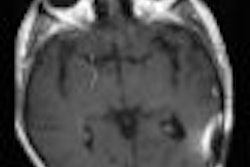When battling prostate cancer, how much firepower does androgen deprivation therapy (ADT) provide when paired with radiation therapy? Dr. Howard Sandler of the University of Michigan Medical Center in Ann Arbor took on the question by laying out the clinical evidence in favor of hormone therapy and radiation therapy.
In a recent talk, he discussed randomized, clinical trials that addressed the treatment needs of high-risk patients. "For the purposes of my discussion, high-risk disease is really high-risk disease," said Sandler, a professor of radiation oncology and urology.
"These are patients who, for the most part, would not be considered ideal candidates for radical prostatectomy. Certainly, they would not be considered candidates based on the current (National Comprehensive Cancer Network) guidelines or the (European Association of Urology) guidelines. These are not small-volume T3 disease, or T2 prostate-specific antigen 15 patients," he explained at the 2008 Genitourinary Cancer Symposium in San Francisco. The symposium was sponsored by the American Society for Clinical Oncology (ASCO) and the American Society for Therapeutic Radiology and Oncology (ASTRO).
The ADT/radiotherapy armamentarium
RTOG 8610
Radiation Therapy Oncology Group (RTOG) 8610 was a phase III randomized trial that evaluated short-term ADT (goserelin and flutamide) in combination with external-beam radiotherapy (EBRT) in men with locally advanced prostate cancer. The 456 enrolled patients received ADT and EBRT, or EBRT alone.
According to the results, 10-year overall survival and median survival times favored ADT with EBRT, although ADT's advantage did not reach statistical significance. However, the authors noted that there was a statistically significant improvement in 10-year disease-specific mortality and disease-free mortality (Journal of Clinical Oncology, February 1, 2008, Vol. 26:4, pp. 585-591).
"Note that the survival advantage didn't really emerge until after five years," Sandler said. "Remember that the combined treatment was only four months."
RTOG 8531
RTOG 8531 was designed to evaluate adjuvant androgen suppression (goserelin) with definitive radiotherapy in unfavorable prognosis carcinoma (stage T3). In total, 977 patients were enrolled and, as of July 2003, the median follow-up for all patients was 7.6 years and 11 years for living patients. In the group that received combined therapy, the drug was started during the last week of radiotherapy and was continued indefinitely, or until the researchers saw signs of progression.
They found that at one decade the absolute survival rate was significantly greater for the adjuvant arm, and the 10-year local failure rate also improved for the adjuvant group. Improvements were also seen in disease-specific mortality and distant metastases in the group that underwent combined therapy. Finally, the improvement in survival appeared preferentially in patients with a Gleason score of 7 to 10 (International Journal of Radiation Oncology, Biology, Physics, April 1, 2005, Vol. 61:5, pp. 1285-1290).
"This study showed an impressive advantage to the long-term hormone therapy in that an overall survival advantage was detected," Sandler said. "But it took a while for this (survival advantage) to emerge from this data."
Sandler noted that in a second analysis of RTOG 8531, Dr. Luis Souhami from McGill University Health Centre in Montreal focused on patients who discontinued hormone therapy despite the fact that they were slated to receive it indefinitely. This secondary analysis determined that the group who received a minimum of six years of therapy did better than those who stopped the hormone regimen earlier.
"The suggestion being that longer-duration hormone therapy benefited these patients in terms of overall survival," Sandler said.
RTOG 9601 and 9902
For study 9601, 818 men with locally advanced prostate cancer were randomly assigned to radiotherapy alone, three months of ADT (goserelin and flutamide), or six months of ADT. The researchers noted that six months of ADT given before and during radiotherapy improved the outlook of patients with locally advanced prostate cancer (Lancet Oncology, November 2005, Vol. 6:11, pp. 841-850).
Sandler served as a chairman for RTOG 9902, a phase III study that compared ADT and radiation therapy given concurrently to radiotherapy followed by chemotherapy. Launched in 2000, the required sample size for this study was 1,440 patients. In the long-term therapy arm, the patients had ADT for 28 months. The trial was closed in 2004. The results of RTOG 9902 are slated to be published soon in the Journal of Oncology, Sandler said.
EORTC
In the late 1990s, the European Organisation for Research and Treatment of Cancer (EORTC) conducted a comparison study of external irradiation alone and external irradiation combined with an analogue of luteinizing hormone-releasing hormone (LHRH). The ADT agents used were goserelin for three years and cyproterone acetate for one month. The primary end point was clinical disease-free survival.
The group found that in 412 patients with a median follow-up of 66 months the combined treatment arm saw improvements in five-year overall survival (Lancet, July 13, 2002, Vol. 360:9327, pp. 103-106).
EORTC "showed a dramatic improvement in overall survival; really demonstrating unequivocally that radiation and hormone therapy improved survival.... This survival advantage emerged relatively early and was well established by five years. It's really a very dramatic finding," Sandler said.
Sandler offered data from an update to the EORTC trial, with an additional year's worth of data. Among 970 patients, the median follow-up was 6.5 years, and 46 deaths occurred due to malignant disease. Again, the long-term therapy arm came out ahead of short-term therapy, with most of the deaths due to malignant disease, he said.
Conclusions
Returning to the original question -- how much ADT is enough? -- Sandler offered the following answers:
"For non-PSA failure end points, short-term hormone therapy is better than no hormone therapy," he said. "Long-term hormone therapy is better than no hormone therapy. Long-term hormone therapy is better than short-term hormone therapy, based on the RTOG studies, which showed a decrease in prostate cancer-specific mortality."
However, exactly how long the therapeutic regimen should last remains an open-ended question. "I think that we are unable to conclude that one of these long-term therapy arms is superior to the other," Sandler said. "High- risk patients should receive long-term hormone therapy along with radiation therapy with long-term therapy, as of today, at 28 to 36 months."
By AuntMinnie.com staff writers
March 31, 2008
Related Reading
Disease-free survival, mortality uphold novel radiotherapies for prostate cancer, February 14, 2008
Early salvage radiotherapy improves survival if PSA rises after surgery, February 14, 2008
Copyright © 2008 AuntMinnie.com



















